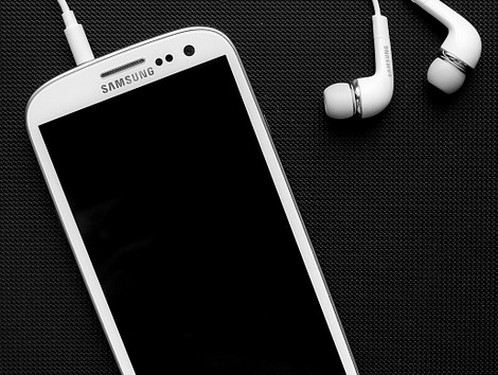- Marketing Mix Strategy ›
- Products ›
- Samsung Marketing Mix (4Ps) & Marketing Strategy
Samsung Marketing Mix (4Ps) & Marketing Strategy
Marketing strategy of Samsung through marketing mix framework which covers the 4Ps (Product, Price, Place, Promotion).
Samsung Product Strategy:
Samsung invests a lot in research and development to deliver the best products to its customers. Samsung offers a wide range of products in different product categories. The diverse offerings come under the products of Samsung marketing mix. The products can be classified into five categories and they are:
Mobile devices:
Samsung is one of the leading manufacturers of mobile phones. Smartphones like Samsung Galaxy series, tablets, wearables, accessories etc. for a big part of the brands portfolio
Home Appliances:
Refrigerators, Washing Machines, Cooking appliances, Air conditioners, Vacuum cleaners etc. are some of the consumer electronics offered by the company
Television:
Samsung Television, Audio and Video solutions & other accessories are offered by the company. Apart from TVs, the company also has a strong portfolio in digital cameras.
Computer & IT:
Laptops, printers, multifunction devices, monitors and other computer peripherals are also offered by the company.
Memory/Storage:
Samsung is also known to offer high quality SSD, Portable SSD, Memory cards, USB Flash drives etc.
Samsung is seen as a leader and an innovator in the products department and is present in multiple categories as listed above making it a very product focused organization.

Image: pixabay
This concludes the product strategy in Samsung marketing mix & strategy.
Samsung Price/Pricing Strategy:
Below is the pricing strategy in Samsung marketing mix strategy:
Samsung is a market leader in smart phones and is a dominant player in market for home appliances and smartphones. It uses two pricing schemes which are explained as follows.
Pricing strategy based on competition is a part of Samsung marketing strategy. Samsung has not succeeded in becoming the leader in other product categories. Samsung is a trustworthy brand even in the ‘home appliances’ segment. To prevent the flanking attacks from its competitors in the market it’s essential for Samsung to use competitive pricing. Also, Samsung is a not a first mover in these product categories and thus it has to defend its position in the market. All these help in understanding the pricing strategy in the Samsung marketing mix. Samsung also uses skimming price policy. For instance, when Samsung launches new products with different variants of storage capacity, it prices the product higher. But when other competitors launch a smartphone with identical features, Samsung lowers the price and easily prevents the reduction of its market share due to the launch of the competitor. The annual revenue of the company is more than $200 billion.
Read more about Samsung
Samsung Place & Distribution Strategy:
Following is the distribution strategy in the Samsung marketing mix:
Samsung sells directly to the retailers and service dealers. And due to this strategy, only service dealers are responsible for the corporate sales. Retailers dealing in technology generally have to include Samsung in their offerings, because of the brand being world-famous. The distribution is the strength for Samsung. Samsung also distributes its products using a single distribution company in a particular location that further distributes the products to other locations.
Samsung products are widely available through ecommerce platforms and even through their own website.
Samsung Promotion & Advertising Strategy:
The promotional and advertising strategy in the Samsung marketing mix is as follows:
Promotion is a strong pillar in the marketing mix of the company. Samsung believes that advertising the best form of promotion to engage potential consumers and position the brand. Samsung promotes new products using newspapers and digital media. To take the advantage of the huge number of followers of celebrities, the brand has invited many celebrities to be the brand ambassadors and promote the product. Big hoardings and posters are put up on highways. The brand has a strong presence online via social media channels, digital marketing and online ads. Besides advertising, Samsung also uses different promotional tactics to make customers buy the product. Samsung is mostly famous for its product quality and user experience but Samsung is also known for being a giant in sponsoring events. Samsung also sponsors major events. Samsung offers heavy discounts during national festivals. This concludes the Samsung marketing strategy and marketing mix analysis.
About Samsung:
Samsung is a South Korean company founded by Byung-Chull Lee in 1938. The company started as a trading company and gradually became a multinational conglomerate through many acquisitions and mergers. Samsung Electronics Industry Co Ltd was established in 1969. Samsung has more than 200 subsidiaries across the world. The brand’s vision is to be in the global top 5 by 2020 and it believes that value creation and innovation will lead it to the top.
The company also inspires to be in the top 10 world’s best workplaces. The company offers Mobile devices, Televisions, Home Appliances to the consumers.
This article has been researched & authored by the Content & Research Team which comprises of MBA students, management professionals, and industry experts. It has been reviewed & published by the MBA Skool Team. The content on MBA Skool has been created for educational & academic purpose only.
Browse marketing strategy and 4Ps analysis of more brands similar to Samsung. The Marketing Mix & Strategy section covers 4Ps and 7Ps of more than 800 brands in 2 categories.
Continue Reading:
The names and other brand information used in the Marketing Mix & Strategy section are properties of their respective companies. The companies are not associated with MBA Skool in any way.
What is MBA Skool?About Us
MBA Skool is a Knowledge Resource for Management Students, Aspirants & Professionals.
Business Courses
Quizzes & Skills
Quizzes test your expertise in business and Skill tests evaluate your management traits
Related Content
All Business Sections
Write for Us